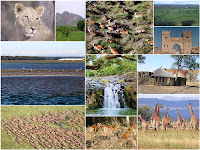South Sudan's Elephants And Other Animals In Great Danger Of Becoming Extinct

Elephants in South Sudan could soon be extinct due to unchecked and uncontrolled, increased poaching and trafficking, conservationists warn. For a country that has just gained independence and which has had about fifty years of civil war and much instability during that time, its wildlife is supposed to be better protected than before. And yet, paradoxically, during those many years of war and instability - its wildlife, although also poached and eaten, were safer than now. All its wildlife: plants, flora and small and large animals were safer. South Sudan's savanna was the largest in Eastern Africa. Today, South Sudan's awesome wildlife is in danger of being destroyed: its wild animals, elephants in particular, are relentlessly being cruelly hunted down by well armed, well organized poachers. Poachers and trafickers from within the country, and many from outside are attracted by abundant, poorly protected wild animals.












